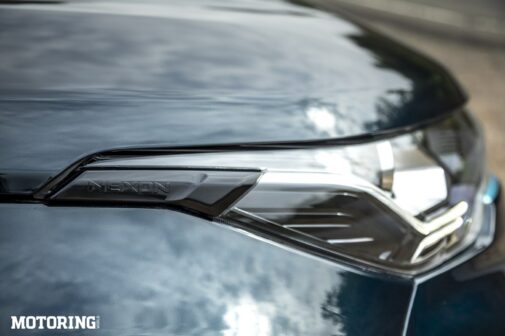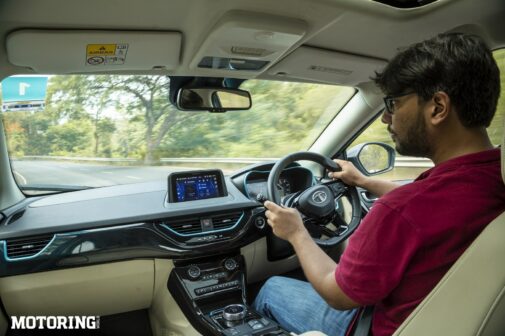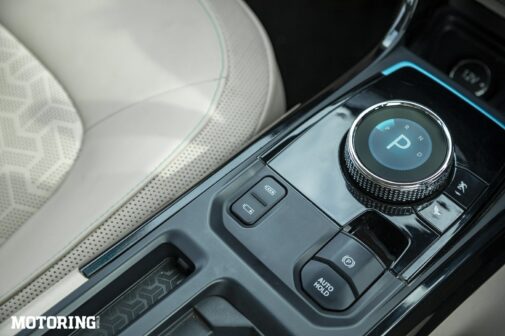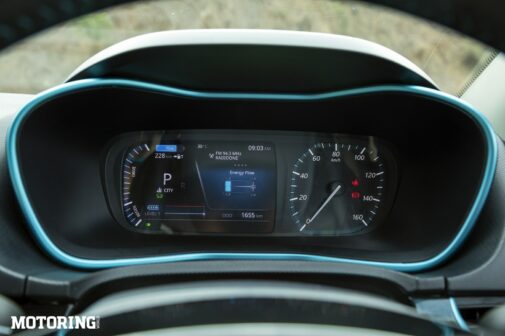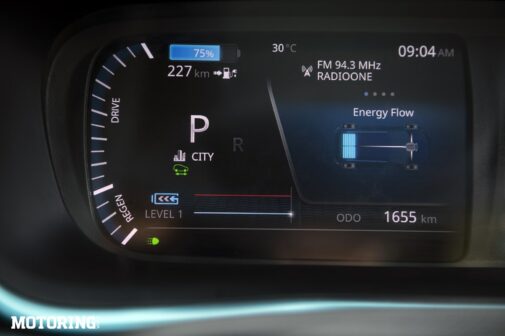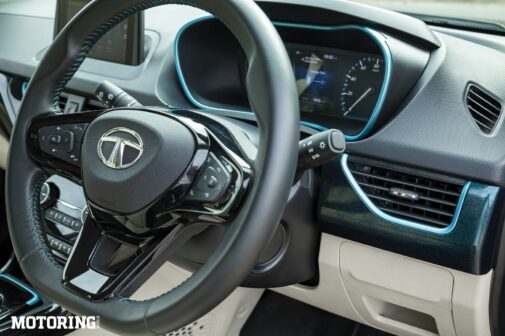The Tata Nexon EV has been the pick of the mass-market EVs for a while now. However, more expensive rivals — such as the MG ZS EV and the Hyundai Kona Electric — do boast of greater range and a little more in terms of features, which has led to the Indian carmaker upping the ante. This longer range Nexon EV gets the suffix Max, which is a good indication of Tata trying its best to deliver the maximum amount of potential its all-electric SUV is capable of. Of course, the two new Max variants do cost a premium over the standard variants, and we’re going to find out if it’s worth the cost.
Those looking for visual differentiators between the standard model and the Max variants may be a little disappointed. Other than the new dark teal colour, new alloys, and a subtle, blacked-out Nexon badge on the edge of the headlights, the Nexon EV Max looks the same. There’s two ways to look at this — one is that those who buy the standard Nexon EV won’t feel put out by those who can shell out the Rs 1.54 lakh premium, and the other is that those who can afford the Max will feel let down by the lack of significant identifiers.
Still, the Nexon EV has been, and continues to be, a good-looking all-electric SUV. The new colour contrasts well with the electric blue highlights all around and the grey roof, and the diamond-cut 16-inch alloy wheels add the requisite amount of sportiness to the package. This also holds true for the interior of the Nexon EV Max, though there are a few more noticeable changes here. The most obvious one is the rather spectacular-looking ‘jewelled’ transmission dial, which changes colour based on the mode selected — red for Sport, blue for City, and green for Eco. The blue tri-arrow pattern on the dash and the new beige trim all around makes the cabin brighter, too.
You don’t have to be eagle-eyed to also notice the new electronic parking brake with its auto-hold function (that works quite seamlessly), or the button to activate the ventilated seats. Tata’s AC units have always been one of the highlights, and that this extends to the cooled seats is an absolute boon in the summer months. In fact, this is probably the first time I had to switch off the ventilated seats after an hour-long drive, which is saying something considering my fat bottom in jeans and the 38-degree heat of the day.
Tata also offers hill-descent control on the Nexon EV Max, rear disc brakes, and four levels of regenerative braking — the last one can be toggled with buttons on the centre console. Despite all that tech, the brake feel is spot on and you can mete-out exactly how much you need. An unwary pedestrian of the four-legged variety even gave me the opportunity to panic brake, and I came away feeling rather confident in the Max’s stopping power. Another nice touch is when using the highest level of regen, the brake lights are activated as well.
Despite the bigger battery pack, there’s no change in the Nexon EV Max’s roominess or ability to carry luggage, thanks to some rather clever packaging. You do get the sense that this is a more premium Nexon EV due to the lighter tones and the overall aesthetic, and if this was all that you get for the extra cash, it’d still be worth it, well, almost worth it.
What absolutely does make the Max worth the money, is the bigger 40.5 kWh battery pack that powers a front-mounted electric motor that makes 141 bhp and 25.49 kgm of torque. The ARAI range is 437 km, which is a 125-km increase over the standard Nexon EV. However, It wouldn’t be prudent to expect the Max to actually do that distance in the rear world. Keep an estimate of 300 km on a single charge and you’ll do fine. For Rs 50,000, you can get a 7.2 kW charger, which will help charge the battery to 100 per cent in five to six hours. The standard 3.3 kW one will do the same in 15-16 hours.
It’s surprising that despite the 100 kg increase in mass (70 per cent comes from the bigger battery), the Nexon EV Max is quicker to sprint to 100 kph. I couldn’t verify whether the under 9-second time was accurate, but it definitely feels quicker. What’s more, the limited 140 kph top speed is easily within reach, and it’ll even cruise comfortably (thanks to the new cruise control function) at that speed. That will drain the battery faster though. There’s a less dramatic reaction when you stomp on the go pedal, as the assist systems curb wheel spin, but that means you do get more of a shove into your seat.
However, what really makes the Nexon EV Max a driver’s delight is the way it rides and the way it handles. Even at max speed, it feels astoundingly stable, and the suspension soaks up almost anything thrown at it, regardless of the speed. Tata has managed to maintain the 50:50 front to rear weight distribution that made the Nexon EV such a neutral handler, and it shows when you go around a corner. The Nexon EV and the Max are, without a doubt, the best handling mass market electric cars, furthering its case.
Even at this higher price point, the Nexon EV Max is still Rs 2.75 lakh more affordable than its closest competitor (the MG ZS EV), which makes it a superb value for money proposition. If you’re in the market and can afford the more expensive Nexon EV, buy it with your eyes closed and you won’t regret it.
AUTODATA
Tata Nexon EV Max XZ+ LuxPOWERTRAIN
Battery:
Max Power:
Max Torque:
Range:
40.5 kWh
141 bhp
25.49 kgm
437 km
TYRES
F/R: 215/60 R16
DIMENSIONS
L/W/H (mm):
Wheelbase:
Ground clearance:
Kerb weight:
3993/1811/11616
2498 mm
190 mm (unladen)
1500 kg
PRICE
Rs 19.24 lakh (ex-showroom, India)










